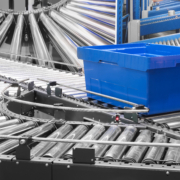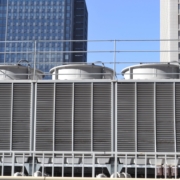Enhanced circuit protection: An evolution in safety, efficiency, and reliability
Circuit protection is a vital safeguard for people and assets. More than a century ago, the first electrical fuses designed to protect electrical systems against excessive currents were introduced. Since then, innovations in enhanced circuit protection solutions have made electrical power more efficient, reliable, and safer.
Innovations cater to end applications
Circuit protection is needed to safeguard millions of facilities, machinery, assets, and lives each year and will play a vital role in protecting modern electrical systems for the next century. Fuses were the first protective device designed to protect against dangers of electrical energy. However, when a fuse is hit with an overcurrent, the metallic wire inside the fuse melts, breaking the circuit. This mechanical destruction requires the fuse to be replaced after each trip. Crews must be dispatched to replace the fuse onsite, lengthening downtime for consumers and increasing costs.
Roughly fifty years after the introduction of the fuse, miniature circuit breakers (MCBs) were developed to address that challenge. In the event of an overcurrent, the MCB quickly disconnects the circuit to protect the motor and wiring from damage due to overheating. With no melted fuse, MCBs can be easily reset after tripping by simply switching them back on, much like flipping a light switch.
While fuses can be less expensive initially, MCBs are often a less expensive circuit protection option long term as they don’t need to be replaced after each trip. They also don’t tend to experience the same problem with “nuisance tripping” as they age. Furthermore, MCBs can be configured to allow remote resetting of the device, reducing costs by eliminating the need for a truck roll.
MCBs are often used in applications where the primary concern is protecting against overcurrent. An example is the protection of an electric motor, where an overload due to mechanical failure could cause excessive current to flow through the circuit. The swift response offered by MCBs makes them especially valued in industrial settings where an overcurrent could impact production and destroy costly equipment. MCBs can also be manually tripped to allow personnel to perform equipment maintenance safely.
MCBs are also commonly used to secure lighting circuits, power outlets, and other electrical systems, such as a control panel in a pharmaceutical manufacturing facility or by electrical utility companies as part of their power management systems.
RCDs further improve electrical safety
In 1953, the first Residual Current Devices (RCD) further improved electrical safety. While a MCB is designed to protect an electrical circuit and any equipment connected to the circuit from damage caused by an overcurrent, an RCD is specifically designed to protect against the dangers of electric shock and prevent the risk of electrical fires caused by earth faults.
RCDs do this by constantly monitoring the current balance between the phase conductors (or live wires) and the neutral conductor. If the device detects an imbalance, suggesting that some of the current is escaping through an alternate path (such as a person who has touched a live component), the RCD will immediately trip and cut off the electricity supply.
RCDs are crucial for applications such as heat trace systems, healthcare facilities, and semiconductor manufacturing where the likelihood of water contact and earth leakage is higher. In OEM applications, RCDs are also installed where the use of high-powered equipment increases the risks of insulation failure leading to earth faults.
Enhanced safety with increased efficiency
ABB’s SMISSLINE TP is the latest evolution in safety, allowing for the integration of MCBs, RCDs, and other components (such as SPDs and motor starting and protection solutions) into one touch-proof system. The touch-proof design enhances personnel safety by preventing direct contact with live components during insertion or removal, either by plugging them into the busbar directly or by means of stab adapters.
ABB’s SMISSLINE TP also incorporates advanced monitoring capabilities to enhance safety, efficiency, and system reliability. One of the main features includes the integration of open core sensors that facilitate branch monitoring within existing installations without uninstalling and reinstalling branch circuit components. This feature is particularly valuable in reducing downtime.
Making electrical energy efficient
Another core advancement in safety, efficiency, and reliability is the ability to remotely monitor electrical circuits in real time. This allows organizations and electrical utilities to focus maintenance activities and prevent failures before they occur. While intelligent technologies have been around for several decades, the systems used to monitor the information being gathered are rapidly becoming more sophisticated, with AI and machine learning capabilities quickly becoming the norm.
For example, ABB’s Circuit Monitoring System Control Unit, SCU-100, enables detailed real-time monitoring of electrical parameters, providing users with comprehensive insights into the health and performance of the electrical distribution system. The control unit features an integrated web server so that data can be transmitted remotely to a PC. By leveraging this technology, facilities can optimize energy consumption, identify potential issues before they escalate, and enhance overall system safety.
Meeting the world’s demand for electricity
In today’s world, power reliability and efficiency are essential. Yet, striving for reliability and efficiency without safety is dangerous. As electricity becomes the power form of choice for more and more applications, improving the safety, efficiency, and reliability of electrical systems will be of even greater concern.
ABB is deeply committed to leading the way, with innovations in safety, efficiency, and reliability across all services and products. ABB innovations in enhanced circuit protection solutions embody this commitment and demonstrate ABB’s dedication to delivering superior electrical solutions to customers worldwide.
See related blog post “What you need to know about miniature circuit breaker trip curves”.
—
Tanvi Dixit
Product Marketing Manager
Thomas Weinmann
Product Marketing Manager












